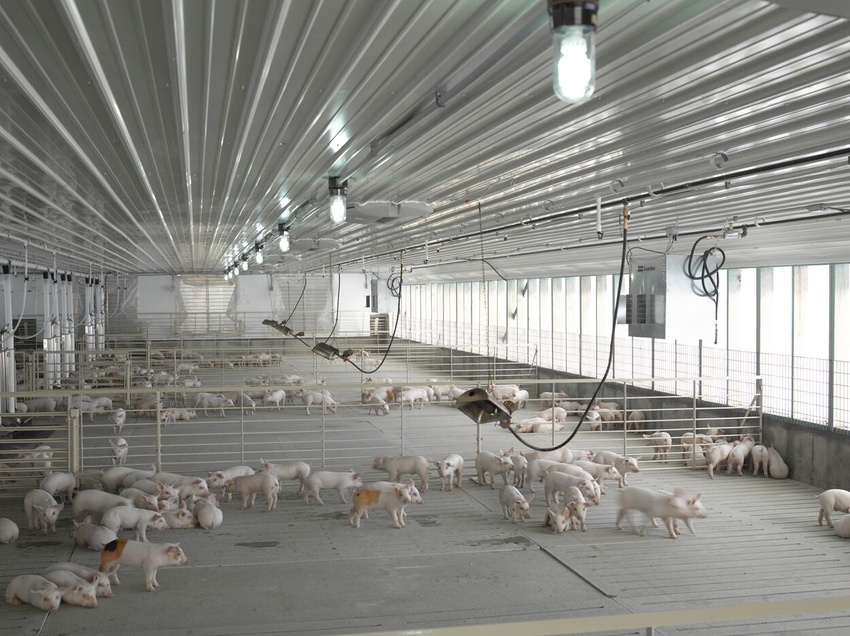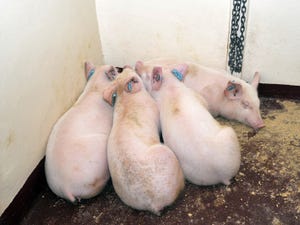Forecasting this week's Hogs and Pigs report
Thus far in 2022 sow slaughter has been down roughly 7% from last year's level. Low sow slaughter implies a growing breeding herd.

On Wednesday afternoon USDA will publish the results of their March 1 hog inventory survey. The quarterly Hogs and Pigs report has a good track record of predicting future hog slaughter. My prediction for what USDA will tell us is:
All Hogs and Pigs - 99.0%
Breeding herd - 100.2%
Market hogs - 98.9%
<50 pounds - 101.4%
50-119 - 100.0%
120-179 - 96.5%
>180 - 96.0%
Sows farrowed Dec-Feb - 100.5%
Farrowing intentions
Mar-May - 100.0%
Jun-Aug - 100.5%
Pigs per litter Dec-Feb - 100.8%
Pig crop Dec-Feb - 101.3%
As you can see, except for the heavy weight market hogs, I expect most of USDA's numbers to be close to 100% of last year's level.
Look for USDA to make some minor revisions to their December market hog numbers. Hog slaughter in December-February wasn't quite as low as expected (down 5.0% vs down 5.5%). Thus far, March hog slaughter has been down 4.6% which is more of a drop than the 2.5% decline the December numbers indicated.
Thus far in 2022 sow slaughter has been down roughly 7% from last year's level. Low sow slaughter implies a growing breeding herd.
I expect USDA to say winter (Dec-Feb) farrowings were up 0.5% year-over-year. I'm predicting spring farrowings to be even with last year and summer (Jun-Aug) farrowings to be up 0.5%.
If my farrowing numbers are right, then the spring and summer pig crops should be roughly 1% larger than last year. This means fall hog slaughter should be up a bit and total hog slaughter for 2022 is likely to be 1-2% lower than last year.
My forecast for quarterly slaughter this year is:
The Canadian hog inventory at the start of 2022 was up 0.6% year-over-year. Their breeding herd was up 0.3%. Fourth quarter 2021 farrowings were down 0.6% and their pig crop was down 0.1%. Look for 2022 imports of pork and live hogs from Canada to be even to slightly higher than last year.
The amount of pork in cold storage at the end of February was down 0.6% compared to a year ago. Frozen pork stocks have been below the year-earlier level for 22 of the last 23 months. The low stocks of frozen pork give room for increased supply should demand slow.
Iowa State University calculations of hog profits in February averaged $21.36 per head sold. This follows three months of red ink. This was the highest profit since September. Cost of production in February was estimated at $86.84/cwt of carcass, the highest since October 2013. Both high production cost and black ink should last for a while.
Hog prices have done well thus far in 2022. The futures market expects prices to strengthen until summer. Futures contracts for April through August are above $100/cwt with June and July futures above $120. This year's price pattern should be similar to last year.
USDA is predicting an average live price for hogs of $71/cwt this year, up nearly $4 from last year and up more than $27 from 2020. A live price of $71/cwt should give a carcass price of $95/cwt. That will be the highest annual average since 2014 and the second highest this century.
Corn prices are high. Extremely high fertilizer prices and the war in Ukraine has made the grain markets very nervous. May and July corn futures are above $7 and September 2022 thru September 2023 corn futures are trading above $6/bu.
USDA is predicting that pork exports will decline by 300 million pounds (4.3%) this year after a drop of 250 million pounds (3.4%) in 2021. The decline in exports has a lot to do with the big decline in Chinese imports. U.S. pork imports are predicted to be up 205 million pounds (17%) this year.
USDA says U.S. per capita pork consumption averaged 51.7 pounds in 2020 and 51.1 pounds in 2021. They are predicting 51.2 pounds for the average in 2022.
Thus far 2022 slaughter weights have averaged a bit higher than last year. It looks like hog profits will be good this year which should help keep weights up.
Source: Ron Plain, who is solely responsible for the information provided, and wholly owns the information. Informa Business Media and all its subsidiaries are not responsible for any of the content contained in this information asset. The opinions of this writer are not necessarily those of Farm Progress/Informa.
About the Author(s)
You May Also Like





